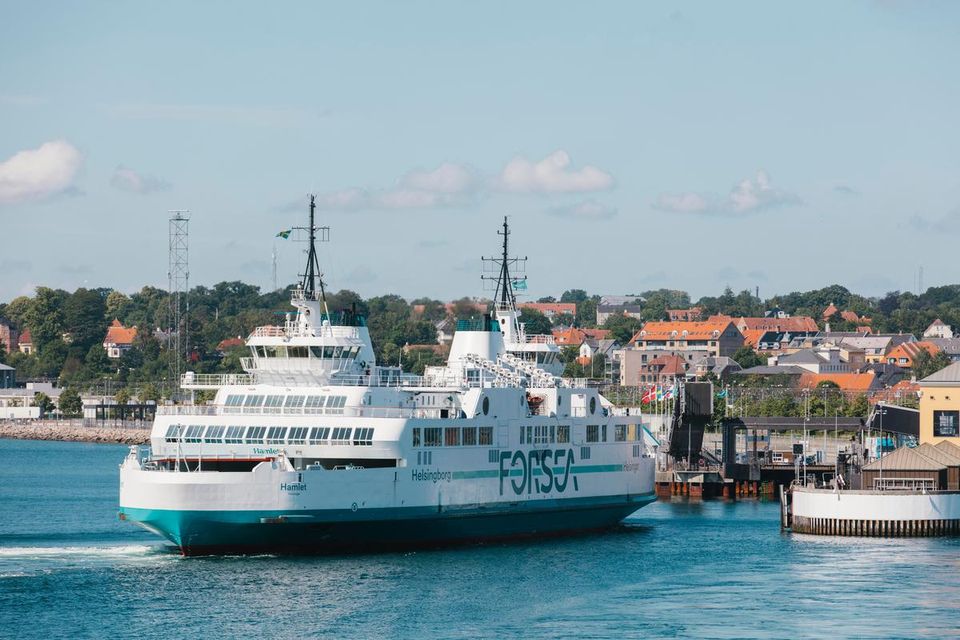 Hamlet. Foto: Molslinjen A/S.
Hamlet. Foto: Molslinjen A/S.
The third ferry at the Øresundlinjen is being prepared to sail on green power
After the electrification of the ferries Tycho Brahe and Aurora, the Öresund Line is now preparing to convert the third ferry, M/F Hamlet, to operate on batteries charged with power from wind and solar energy.
Molslinjen has just placed another order for some of the world’s largest ferry batteries. It will be the Swedish supplier of maritime batteries, Echandia, that will deliver the battery pack to convert the ferry M/F Hamlet from fossil fuel operation to fully electric operation.
“Echandia has batteries that offer a combination of long durability and low weight, ensuring us the lowest costs and the lowest carbon footprint over the entire lifespan of the battery pack,” says Molslinjen’s CEO, Kristian Durhuus.
The battery pack is expected to be delivered in the first half of 2025, and with Hamlet’s 8000 annual departures on full electric operation, 95 percent of all 41,000 annual departures on the route across the narrow Øresund between Denmark and Sweden will be sailed on clean green power. This will reduce the route’s total carbon footprint to below 1500 tons of CO2 annually.
Before the conversion of the first two Øresund ferries in 2016, the route had annual emissions of 37,800 tons of CO2.
Echandia already supplies the battery packs for Molslinjen’s two new electric ferries for the Als Line and the Samsø Line. These ferries are being built at shipyards in Turkey and will be sailed to Denmark by the end of 2024 and the beginning of 2025.
“The green transition of our ferries is the overriding task for us in the coming years. Now we are converting M/F Hamlet on the Öresund Line – and later comes the world’s largest ferry electrification project ever when power is needed for our fast ferries in the Kattegat,” says Kristian Durhuus.
The conversion of M/F Hamlet is expected to be completed during 2025.

